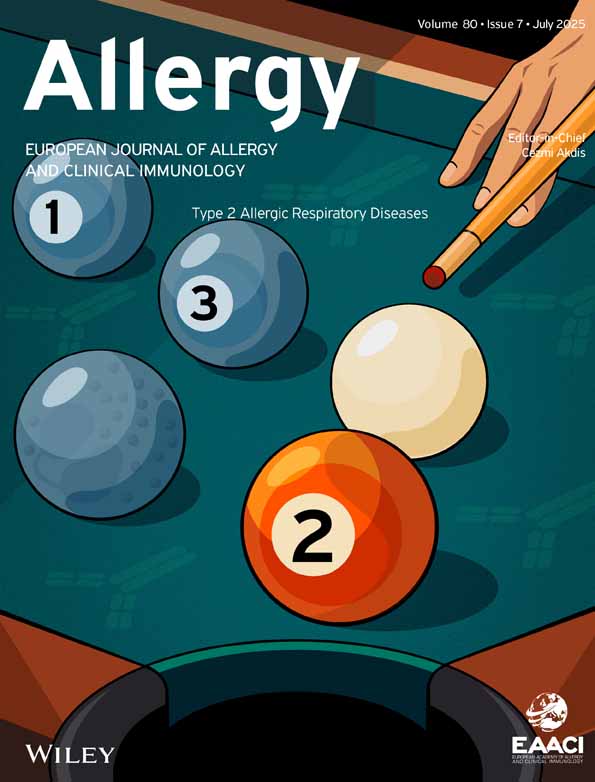Prevalence and predictors of rhinitis in Danish children and adolescents
Abstract
Background: The prevalence of self-reported symptoms of allergic rhinitis is increasing in many countries, but the reasons for this trend are not well understood. Data from a 6-year follow-up study of a population sample of children and adolescents (n=408), aged 7–17 years at enrolment in 1986, were analyzed to investigate the prevalence and predictors of self-reported rhinitis.
Methods: Case history was used to assess the presence or absence of rhinitis (sneezing and running or blocked nose not associated with a cold), asthma, and eczema. Pulmonary function, skin prick test reactivity, and airway responsiveness to histamine were measured in all participants; a screening test for IgE antibodies to common allergens (Magic Lite SQ, Allergy Screen, ALK, Denmark) was performed in 237 (58%) of the participants.
Results: The point prevalence of rhinitis increased from the first to the second survey, 14% and 22%, respectively; 54 (13%) of the subjects reported rhinitis only at the second survey (new rhinitis). Confining the analysis to participants without symptoms of rhinitis at the first survey showed that self-reported eczema (relative risk [RR] 2.3, 95% confidence interval [CI] 1.2–4.7), airway hyperresponsiveness (RR 2.5, CI 1.8–3.0), atopy to grass pollen (RR 2.6, CI 1.7–3.3), atopy to dog dander (RR 2.4, CI 1.6–3.3), and atopy to house-dust mite (RR 2.7, CI 1.4–5.2) at the first survey predicted an increased risk of the presence of rhinitis at the second survey. A positive Allergy Screen test at enrollment was associated with an increased risk of self-reported rhinitis at follow-up (RR 2.4, CI 1.4–3.4).
Conclusions: This longitudinal population study of children and adolescents showed an age-related increase in the point prevalence of self-reported rhinitis; furthermore, sensitization to common aeroallergens, airway hyperresponsiveness, and the presence of self-reported eczema were significantly associated with an increased risk of subsequent development of rhinitis.




